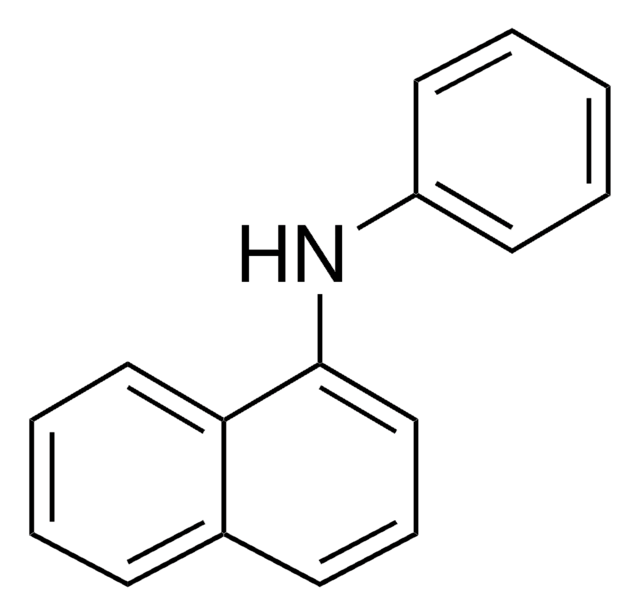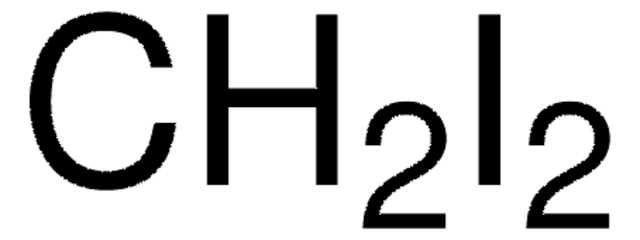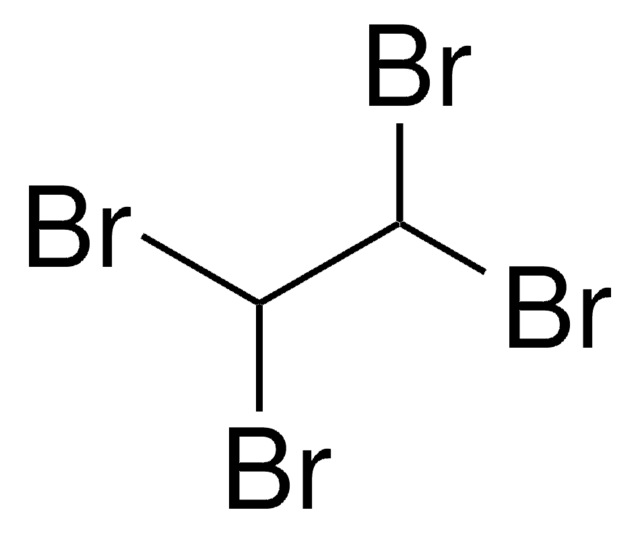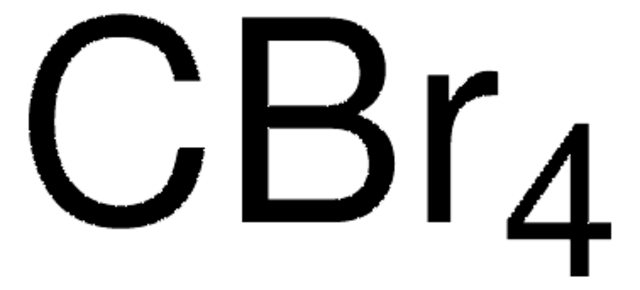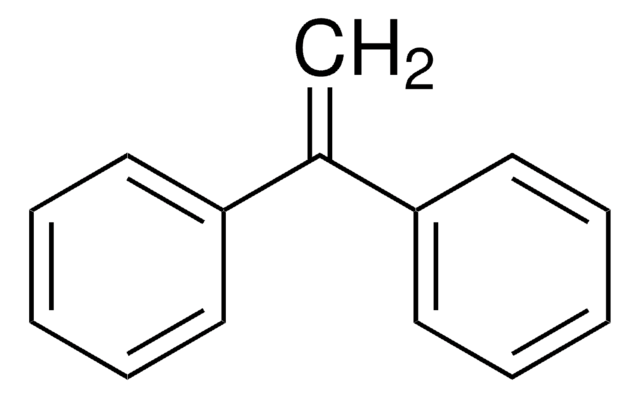132942
Bromoform
contains 1-3% ethanol as stabilizer, 96%
Synonym(s):
Tribromomethane
About This Item
Recommended Products
vapor density
8.7 (vs air)
Quality Level
vapor pressure
5 mmHg ( 20 °C)
assay
96%
form
liquid
contains
1-3% ethanol as stabilizer
refractive index
n20/D 1.595 (lit.)
bp
146-150 °C (lit.)
mp
5-8 °C (lit.)
solubility
water: soluble 800 part
acetone: miscible
alcohol: miscible
benzene: miscible
chloroform: miscible
diethyl ether: miscible
oil: miscible
petroleum ether: miscible
density
2.89 g/mL at 25 °C (lit.)
SMILES string
BrC(Br)Br
InChI
1S/CHBr3/c2-1(3)4/h1H
InChI key
DIKBFYAXUHHXCS-UHFFFAOYSA-N
Looking for similar products? Visit Product Comparison Guide
General description
Application
signalword
Danger
Hazard Classifications
Acute Tox. 3 Inhalation - Acute Tox. 4 Oral - Aquatic Chronic 2 - Eye Irrit. 2 - Flam. Liq. 3 - Skin Irrit. 2
Storage Class
3 - Flammable liquids
wgk_germany
WGK 3
flash_point_f
106.3 °F - closed cup - (own results)
flash_point_c
41.3 °C - closed cup - (own results)
ppe
Eyeshields, Faceshields, Gloves, type ABEK (EN14387) respirator filter
Choose from one of the most recent versions:
Already Own This Product?
Find documentation for the products that you have recently purchased in the Document Library.
Customers Also Viewed
Protocols
US EPA Method 8260 describes the analysis of volatile organic compounds in solid wastes and ground waters. This application illustrates the analysis of many compounds commonly analyzed by this method using purge and trap coupled to GC-MS.
Our team of scientists has experience in all areas of research including Life Science, Material Science, Chemical Synthesis, Chromatography, Analytical and many others.
Contact Technical Service
